How smart sensors help advanced driver assistance systems
Ashok Belani Group President and managing director of Valeo India and a member of the board for all Valeo entities in India introduces a number of sensors that could improve safe driving on Indian roads
Road safety is a growing global concern as precious lives continue to be lost each day, every month and every year. Governments across the world are taking policy measures to reduce the number of road accidents.
According to statistics released by the Indian government’s Ministry of Road Transport & Highways Transport Research Wing, 147,913 lives were lost through road-related fatalities in the year 2017 in India. To address this challenging scenario, the government has already introduced many initiatives, including issuing a mandate to OEMs to implement safety features such as seatbelt reminders, airbags, reverse parking sensors, alert systems for speed beyond 80kph, and manual override over the central locking system for emergencies in all vehicles starting July 2019. With these stricter regulations and an increase in consumer awareness, we have begun to witness the implementation of active driver assistance systems in vehicles in India, albeit there is a long way to go.
While road-related fatalities continue to lead the table, parking lot accidents are also increasing every year. Global statistics reveal that one in five accidents happen at parking lots and garages, while reversing the vehicle or pulling it out of the parking slot. In the US alone, an average 60,000 people are injured and over 500 die in the 50,000 plus crashes in parking lots and garages every year. The slower speed limit in parking lots gives people a false sense of security, leading to distraction and other driver mistakes, which could turn deadly.
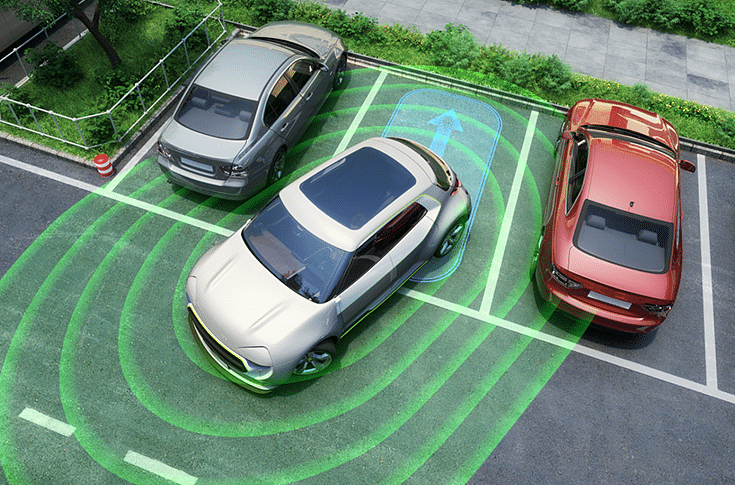
Ultrasonic parking sensors have now evolved into an advanced Park Assist function that enables automatic parking of a vehicle
The Indian government-mandated implementation of advanced driver assistance systems (ADAS), such as the inclusion of reverse parking system in all passenger vehicles by July 2019, and in all commercial vehicles by April 2020, is expected to increase vehicle safety. These driver assistance systems in vehicles are aided efficiently by ultrasonic sensors, which have earlier found use in a wide range of applications such fishing, burglar alarms and many other electronic applications.
An ultrasonic sensor uses echo to detect the distance of the object. The sensor sends out a soundwave that returns after bouncing off the obstacle or an object, and the system determines the distance of the object from the sensor based on the time the soundwave takes to return after bouncing off the object.
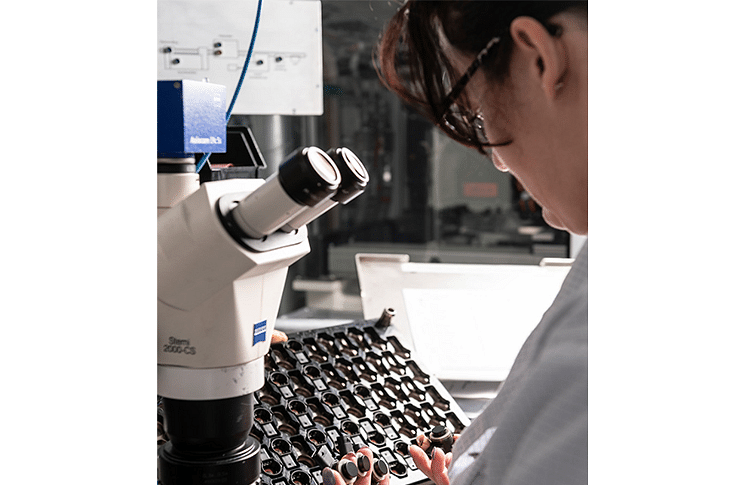
Although ultrasonic parking sensors were used for Reverse Park Assist function earlier — to detect obstacles while parking — they have now evolved into an advanced Park Assist function that enables automatic parking of the vehicle.
A basic Park Assist system uses ultrasonic sensors to alert the driver on the distance through an alarm sound or through an image display on the driver information system. The Advanced Park Assist system uses the sensor to detect the obstacle and helps park the vehicle automatically by accessing the system of the vehicle.
The application of ultrasonic sensors can be further extended to levels such as:
- Front Parking Assist System, where the sensor is located at the front bumper of the vehicle, which assists with both parking and removing the vehicle from the parking lot,
- Flank Guard, which can assist the driver to the potential impact on the sides of the vehicle while driving at low speeds and parking,
- Blind Spot Detection that can help with detecting other vehicles located to the driver’s side and rear corner of the vehicle that are in the invisible zone, at higher speeds, and
- 360-degree sensing, which assists the driver with obstacle detection all around the vehicle.
These advanced systems will give drivers much more assistance all around, depending on the number of sensors and cameras used in the vehicle. They will detect obstacles and alert the driver whether the vehicle is moving ahead or in the reverse direction. Blindspot detection particularly comes in handy, when the driver’s view is blocked due to the structural design of the vehicle.
The lack of parking space in most cities in India is a challenge faced by all drivers. Parking a vehicle in the limited available space stresses the driver leading to accidents, vehicle damage and injuries to people. Technology has aided in the development of automated park assist systems to address this challenge. There are sensor-based technologies, which are available today to help the driver with parking.
The semi-automated park
assist system checks the length and width of the space available for parking, with the help of the sensors and radar. It assists the driver in parking within the available space, without causing any damage to the vehicle. The system gives the instructions to the driver to operate the gear, accelerator and the brake to move forward and backwards, while the steering wheel is controlled automatically by the system.
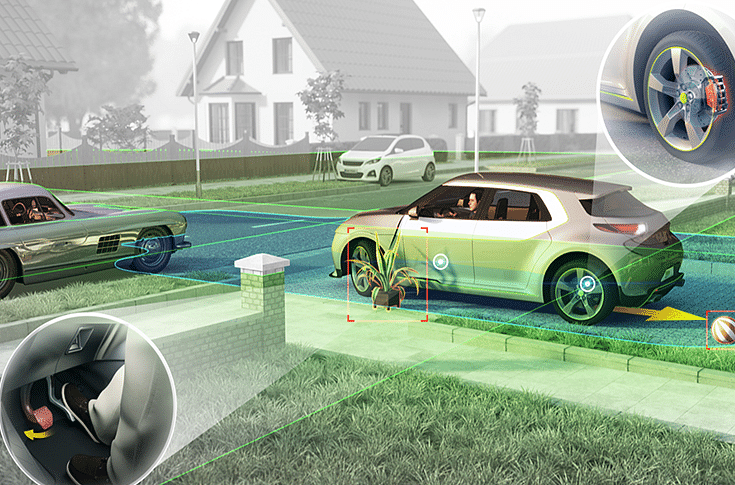
Ultrasonic sensors are also utilised in rear emergency braking systems, which are an extension of the rear park-assist systems
In a fully automated park assist system, multiple functions like measurement of space, gearshift, accelerator, brake and steering wheel are controlled automatically by the vehicle, with the help of the data received from the sensors and the camera in real-time, so the driver can leave it to the vehicle to park itself, by handing over control.
'Teaching' the vehicle
In a remote-controlled park assist system, the driver can control the vehicle to park it with the help of a smartphone, from either inside or outside the vehicle. The parking function is aided by sensors in this case. The driver 'teaches' the vehicle to park itself in a fully autonomous park assist system. The car is 'taught' parking conditions such as 'park at home' or 'park in a garage' for the first time. After learning and recording the layout, the vehicle finds the parking space and parks itself at the touch of a button subsequently. This is possible with the help of sensors, a camera and an automated driving system.
Ultrasonic sensors are also utilised in rear emergency braking systems, which are an extension of the rear park-assist systems. When an obstacle is found while reversing, the system initially gives out a warning sign; if ignored by the driver, it brakes automatically so that the vehicle comes to a standstill. Rear emergency braking systems have proven to be very effective in reducing collisions while reversing.
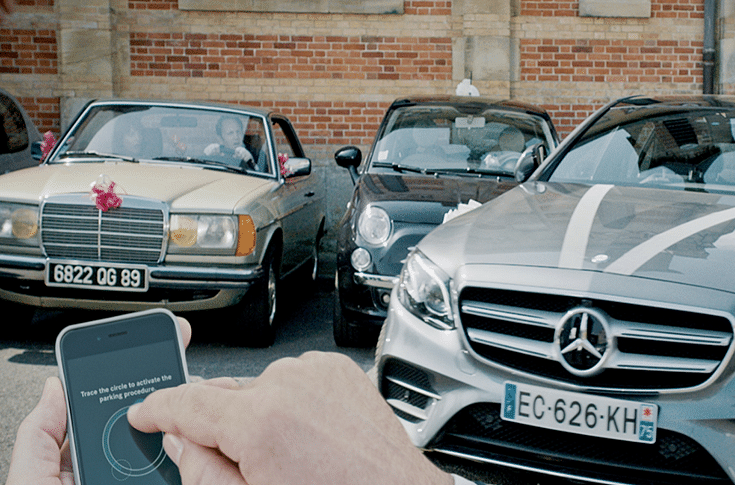
Ultrasonic sensors can also complement other sensors such as cameras, Lidar and Radar for autonomous driving. As technology facilitates the interconnectivity and communication between cars and the outside world, along with cameras, radars, laser scanners and infrared technologies, they are expected to play a more significant role in the future to manoeuvre vehicle safely and reduce accidents.
A recent industry report estimates the parking assistance systems market to reach an estimated $2.1 billion (Rs 15,015 crore) by 2023, growing at a CAGR of 15.9 percent between 2018 and 2023. The increasing customer need for convenience and safety, combined with integration of advanced technologies in automobiles is expected to boost demand for sensors globally in the coming years.
Most of the new vehicles in Asia and Europe today come fitted with rear parking sensors. Advanced Park Assist systems are already available and being used for high-end vehicles in Europe and the US.
In price-sensitive India, however, semi-automatic systems are likely to gain acceptance due to cost considerations. The system involves adding sensors to the front, rear and sides of the vehicle, which can be adopted without any major changes to the vehicle design. The advantage of sensor-based systems, which are modular, is that they can be designed and adopted based on specific needs.
In the coming years, we will witness ultrasonic sensors playing a key role in enhancing the safety quotient of vehicles while driving and parking, as this modular system is perfectly suited for the Indian market.
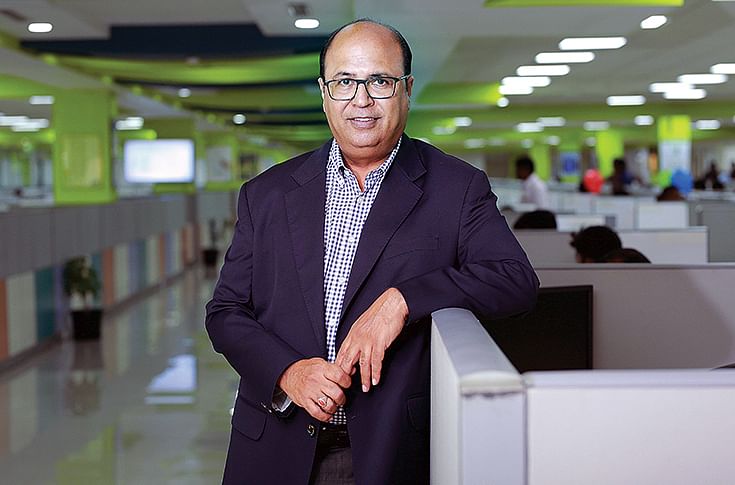
About the author
Ashok Belani is a seasoned industry professional and a senior leader with over three decades of experience in the manufacturing sector. He is the Group President and Managing Director of Valeo India and a Member of the Board for all Valeo entities in India.
(This column was first published in the October 15, 2019 issue of Autocar Professional)
RELATED ARTICLES
Agentic AI Systems: Building Autonomous Solutions
Advanced artificial intelligence agents show capacity for adaptive responses in vehicles, aerospace, and infrastructure ...
India's Automotive Industry at the Crossroads of Nationalism and Globalization
In the dynamic landscape of India's automotive sector, the tension between globalization and nationalism is vividly appa...
Beyond Commute: Empowering People via Last Mile Mobility
Electric Vehicles Revolutionize India's Last-Mile Transportation by Empowering Students, Workers, and Small Businesses W...





 26 Dec 2019
26 Dec 2019
 14738 Views
14738 Views





 Angitha Suresh
Angitha Suresh




